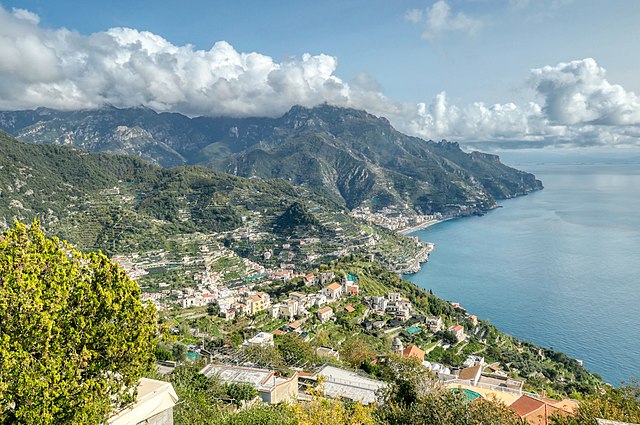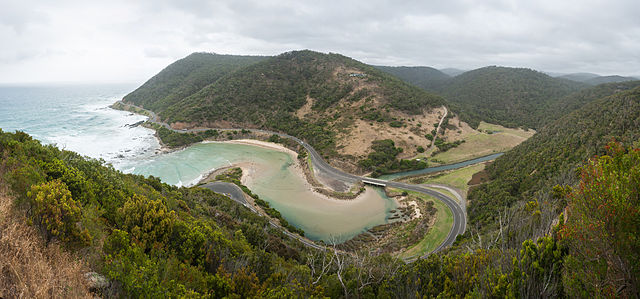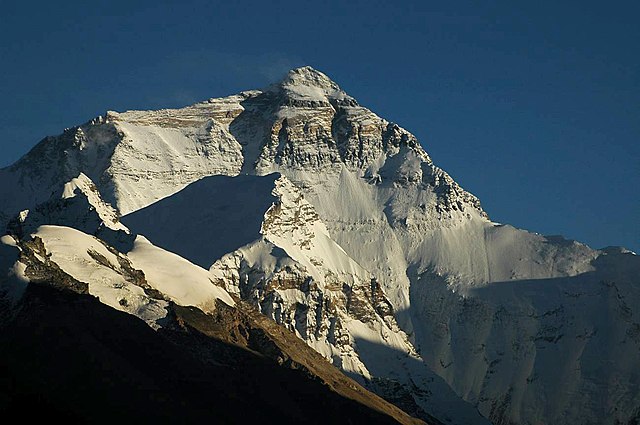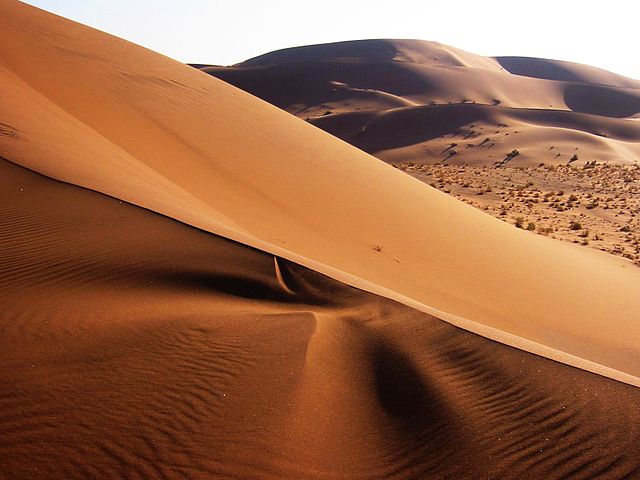10 Top Motorcycling Routes in the World

The joy of feeling the wind on your face, smelling the air, watching mother nature’s scenery go by while feeling your motorcycle engine roar below you is something that can be related by every single motorcycling afficionado around the world. It doesn’t matter whether you are a teenager riding his first motorcycle, someone going through their mid-life crisis or if you are an elderly pro who loves being on two wheels, each one will connect with this motorcycling love.
Such love can be felt while exploring these 10 top motorcycling routes across the world. Not only are some of these the most adventurous routes in the world, some of them happen to be the most scenic too. All you need to do is get your motorcycle in top condition, obtain an international driving permit, pack all your motorcycling travel gear and be ready to hit the road.
1) Ladakh, India

Home to some of the world’s highest motorable roads, the mountain roads of Ladakh in India’s Western Himalayas is for the die hard adventure enthusiast. Rarefied mountain air, stunning mountain panoramas, tough weather, gorgeous culture and lush valleys, the Himalayan roads of Ladakh has everything that a cold high altitude desert can offer and more. These roads are the mecca for all motorcyclists from across the world as they are home to some of the highest motorable passes in the world. Serene looking high altitude mountain lakes, 2nd highest astronomical observatory in the world, rich Buddhist culture are the icing on the cake. Below are some of the high mountain passes that you can visit in this region:
a) Khardung La – 18,380 feet – one of the most popular motorcycling routes in India
b) Marsimik La – 18,314 feet
c) Photi La – 18,124 feet
d) Kaksang La – 17,842 feet
e) Chang La – 17,586 feet
f) Tanglang La - 17,481 feet
g) Wari La – 17,216 feet
h) Umling La – 19,302 feet – getting a permit to ride on this road is tough due to its strategic location and proximity to the line of actual control between India and China.
2) Pacific Coast Highway, USA

The legendary Pacific coast highway covering over 900 kilometres of California’s rugged and beautiful coastlines takes you all the way from San Francisco to San Diego near the Mexico border. It is one of the world’s most astoundingly scenic roads and is meant to be explored slowly, while gasping at the mountains, towering trees, surfing villages, expansive beaches, local wine, Hollywood glitz and endless sky. Starting in San Francisco, the Pacific Coast highway takes you through:
a) Felton – a drowsy mountain town nestled among Redwood trees
b) Santa Cruz – a friendly beach town with a university, gorgeous redwood trees and waves that surfers from all over flock to ride
c) Big Sur – rugged mountains blanketed with dreamy redwood forests that drop into dramatic coastline
d) Cambria – a charming seaside village home to rocky shorelines, bluffs and tide pools teeming with sea life
e) Morro Bay – a small city by a large bay and estuary that is home to a diverse range of fauna including blue herons, monarch butterflies, hummingbirds and sea otters
f) San Luis Obispo – a mellow college town that is famous for its nearby wineries and lighthouse
g) Solvang – mini Denmark that is home to many Danish bakeries
h) Los Olivos – rustic charming town that is surrounded by expansive wineries
i) Santa Barbara – a city where beachy casual meets glitz
j) Los Angeles – home to Hollywood glamour, hipster cool, Disneyland and old fashioned food markets
k) San Diego – a border city famous for its Mexican food, surfing spots, a military outpost and a world famous zoo
3) Amalfi Coast, Italy

Originally built by the Romans, the intense 70 kilometre Amalfi coast road is cut into sheer rock face. On one side is the beautiful blue sea crashing beneath and on the other side is the massive rock face that you find yourself clinging to. Connecting the towns of Sorrento and Salerno, the Amalfi coast highway snakes and winds through endless hairpins and up and over steep hills. The famed Amalfi coast is exactly as you have always pictured: rugged coastline dotted with seaside towns whose classic, balconied buildings overlook the turquoise Tyrrhenian sea. The highlights of this route include:
a) Riding past vineyards that dot the countryside
b) Riserva Statale Valle delle Ferriere – a protected area with several waterfalls and lush plant life
c) Church of Santa Maria Assunta – offers views of opulent villas along the coast that hug the steep mountainside above a petite, sandy beach
d) Duomo Ravello – historic cathedral in Ravello with shops, lodging and dining nearby
e) Impossibly photogenic coast between Minori and Vietri Sul Mare
f) Lattari Mountain National Park – a great ecotourism site that offers some of the most stunning views in all of Italy
g) Fjord of Furore – special place fo artisans
h) Amalfi Cathedral – gorgeous 9th century building bearing the crypt of St Andrew
i) Sirenuse – a cluster of small islands off the coast, fulfilling all your idyllic beach dreams
j) Cetara – small fishing village located between the sea and lush green hills and that is home to affordable stay options and great dining avenues
4) Ceuta to Marrakesh Loop, Morocco

This 2,570 kilometre long exotic route offers an adventure of a lifetime. It takes you through a series of ancient citadels, souks, tall mountains and oodles of vibrant desert culture. The route starts in Ceuta (a Spanish island city on the north coast of Africa), passes through the Rif Mountains through Fez and then through the Atlas mountains to Erfoud and the mighty Sahara desert. From here, you pass through the Todra gorge to the palm groves of Ouarzazate and finally the city of Marrakesh where you get to experience the real flavour of old Morocco. From here, it is a short ride through the Tizi n’Test pass down to the Atlantic coast at Agadir, from where you can visit Casablanca and then Tangiers before returning to Ceuta.
Overall, it is a stunning desert ride where you can enjoy oodles of off roading, twisties and wide open roads, while experiencing the rich desert cultures of Morocco.
5) The Great Ocean Road, Australia

This is an Australian National Heritage listed 240 kilometre stretch of road along the South Eastern coast of Australia. The Great Ocean Road traverses rainforests, beaches, cliffs, natural limestone and sandstone rock formations to give you an experience of one of nature’s best spectacles. This motorcycle route starts at Torquay and travels westward to finish at Allansford near Warrnambool. Following are the highlights of the Great Ocean Road:
a) Surf coast – gorgeous coastline between Torquay and Cape Otway
b) Shipwreck coast – stunning coastline between Cape Otway and Port Fairy that is home to the famous limestone formations called the Twelve Apostles and that provides views of the Bass strait and the Southern ocean.
c) Anglesea – surfing town renowned for its eastern grey kangaroos, Coogoorah Park and the Angair wildflower festival
d) Lorne – seaside town on the Great Ocean Road popular for family bathing, surfing and fishing. It is known for its Falls Festival, 1.2 km Pier to Pub swim, the Great Otway National park, Otway Ranges National park and the Lorne Pier.
e) Apollo Bay – coastal town on the Great Ocean Road that plays host to the annual Apollo Bay seafood festival, Winter Wild and the Great Ocean Road Running festival. Southern right whales and humpback whales are spotted off the coast from winter through spring.
f) Port Campbell – coastal town on the Great Ocean Road that is famous for the following natural limestone and sandstone rock formations located in the Port Campbell National Park and around: Loch Ard Gorge, The Grotto, London Arch and the Twelve Apostles.
6) Kathmandu, Nepal to Lhasa, Tibet

This 1,250 kilometre ride will take you to the rooftop of the world while offering some surreal views of the Eastern Himalayas. The ride begins in Nepal’s capital city of Kathmandu and goes to Lhasa in Tibet while crossing scenic Tibetan landscapes, nomadic villages, snow capped mountains, pristine blue lakes, ancient Buddhist monasteries, historical cities and some of the highest mountain passes in the world. The motorcycling route would be:
a) Kathmandu to Shyabrubesi (125 kms and Elevation of 1,140 m) – Long journey through the remote areas of Langtang National Park
b) Shyabrubesi to Kerung (42 kms and elevation of 2,750 m) – Border crossing into Tibet and acclimatization day
c) Kerung to Tingri (244 kms and elevation of 4,300 m) – Ride to the highest plateau in the world and enjoy breath taking panoramas of Himalayan ranges: Mt Cho Oyu (8201 m), My Xishapagma (8012 m) and Mt Everest (8848 m)
d) Tingri to Xegar (185 kms and elevation of 3900 m) – Ride through the beautiful Tibetan countryside, explore Ronbuk monastery – the highest Buddhist monastery in the world and enjoy the day at Everest Base Camp
e) Xegar to Shigatse (244 kms and elevation of 3900 m) – Cross high altitude snow covered mountain passes and beautiful panoramas to arrive at Shigatse, the second largest Tibetan city
f) Shigatse to Gyantse (95 kms and elevation of 3950 m) – Head to Gyantse while visiting Tashilumpu monastery, Kumbum stupa and Phalkor monastery
g) Gyantse to Lhasa (261 km and elevation of 3650 m) – Full day picturesque drive crossing over Karola (5010 m), Kambala (4749 m) , colourful Yamdrok Tso lake and the Tibetan lifeline Brahmaputra or Yarlung Tsangpo river
7) Namibia, Southern Africa

Namibia is a jewel of Southern Africa. The vast expanses of Namib and Kalahari deserts offer remote solitude that is perfect for off-road adventure travel that includes national parks, impossibly tall dunes, rugged canyons, lush rivers, spectacular coastline, savannah, desert and much more. With the highest dunes in the world located in the legendary Namib desert, the infamous Skeleton coast and the wildlife-rich Etosha National Park, there’s something for everyone in Namibia. Following are the best motorcycle routes in Namibia:
a) Kaokoveld to Skeleton coast: Opuwo –> Palmwag –> Bergsig –> Cape Cross –> Swakopmund: 674 kms, good gravel roads
b) Around the Brandberg: About 220 km, all unpaved, very sandy in the Ugab river
c) Bosua Pass: Windhoek –> C28 –> Swakopmund: 322 km, all unpaved, but good gravel roads
d) The D707: Betta – Junction C 27/D707 – D707 to end/junction with C13: ~150 km, all unpaved, initially gravel, then sand
e) C13 along the Orange river: Rosh Pinah –> Sendering Drif –> C13 to Aubenkehr: 105 km, all unpaved, but good gravel road
8) Pamir Mountains, Tajikistan

The legendary Pamir mountains sit amidst the Hindu Kush, Karakoram, Himalayas and the Tian Shan mountain ranges, all whispering to and luring adventurers for thousands of years. The ancient Pamir highway runs between Termez in Uzbekistan and Kara Balta in Kyrgyzstan. The majority of the road however runs through the highlands of Tajikistan, cutting through the Pamir mountains. This gorgeous ride clocks in over 2000 km and climbs to a height of above 15000 feet at Ak-Baital pass. The entire route is one of the higher motorable routes in the world and hence altitude sickness is quite common. It is part of the ancient silk road and is rich in history, adventure and danger. 80% of the roads are paved and about 20% are gravel. The people of Tajikistan are very hospitable and will always help the tourist (musafir) even in the remotest or corners in Tajikistan.
The Pamir highway route is as follows: Dushanbe –> Qal’ai Khumb –> Khorog –> Bibi Fatima Hot Springs (Yamchun) –> Murgab –> Ak Baital Pass (4655 m) –> Khorog –> Qal’ai Khumb –> Dushanbe
9) North East India to Vietnam

A few years back, the Indian government opened the India-Myanmar border for overland travel. This opened the possibility of a lush forest motorcycling route spanning 5,200 kms and 5 countries. Starting in Siliguri in the Northern part of West Bengal, this route meanders through the dense jungles and tropical forests of North East India before entering Myanmar at Moreh. In Myanmar, the roads are mostly dirt tracks or gravel roads with wooden and metal bridges till you reach Mandalay. From Mandalay, you cut across Inle lake and into the mountainous province of Myanmar and Mae Hong Son in Thailand before you reach Chiang Rai in Northern Thailand. From here, you follow the Mekong river and head towards Luang Prabang in Laos. Then, you head further north into the mountainous region of Laos before you enter the Sapa region of Vietnam. From Sapa, you travel east to Hanoi and then kiss the coast to travel south all the way to the capital city of Ho Chi Minh city. This entire route is a lush tropical paradise. Except for parts of the India-Myanmar border, most roads are paved or in the worst case are good quality gravel roads. You criss cross mountains, rivers, forests and cities to explore this gorgeous part of the world.
Route map: Siliguri, India –> Moreh, India –> Mandalay, Myanmar –> Chiang Rai, Thailand –> Luang Prabang, Laos –> Hanoi, Vietnam –> Ho Chi Minh City, Vietnam
10) El Camino de la Muerte, Bolivia

Last, but not the least in this list is the world’s most dangerous road. Known as the ‘Death Road’, this 69 km winding road stretch connects the world’s highest administrative capital of La Paz in Bolivia to the small Amazonian rainforest town of Coroico. The journey begins at 12,000 feet high Laz Paz with its mix of indigenous and modern cultures. The winding route with a single lane ascends to La Cumbre pass (about 15,000 feet high) in the Andean mountain only to dip back down into the Amazon rainforest over the course of 65 kilometres. The road weaves back and forth as it descends, and the thick forest below tends to obscure the steep drop below. The road is a mix of paved, dusty to loosened rock. Extreme weather is the think to stay aware of. At the top, you might face blinding fog and bone chilling weather, while in the rainforest, you can face high humidity and/or pouring rain. The sheer diversity and extreme route makes it a special motorcycling route of the world.
Photo Courtesy: Some of the photographs in this article have been borrowed from wikipedia.org under the creative commons license. Each photograph has been linked to its host page on wikipedia.org.



































